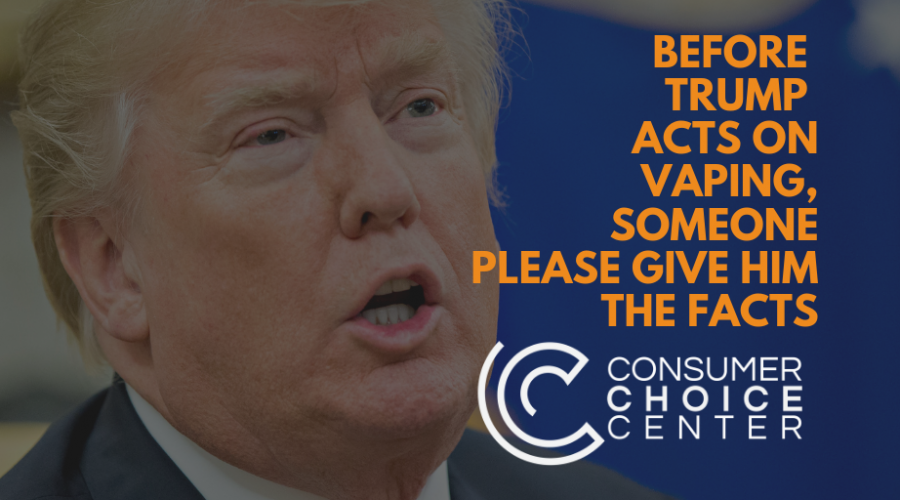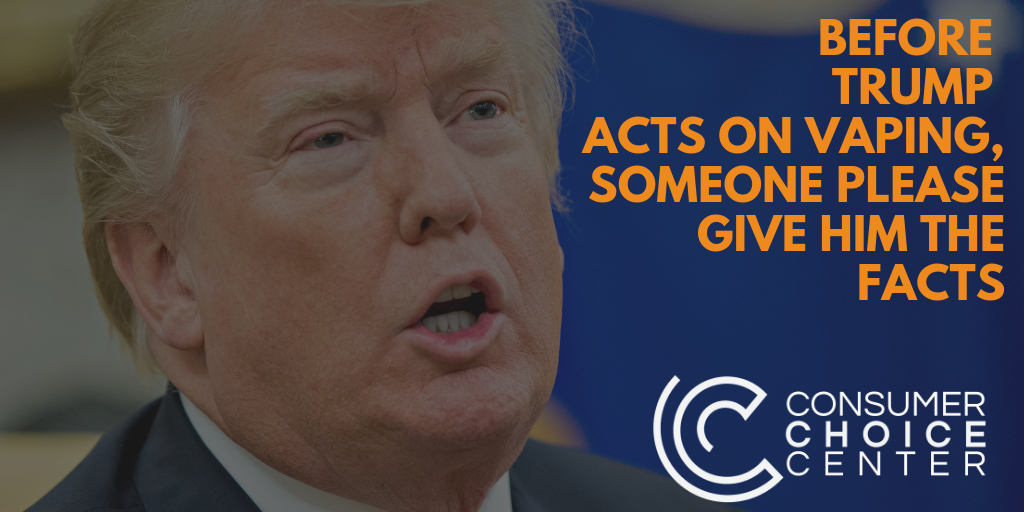Trump Administration Takes Aim at E-Cigarettes
Yaël Ossowski, deputy director of the Consumer Choice Center, said the Trump administration needs to follow the facts.
“The fact is that the technological revolution that is happening today with vaping is giving people a less harmful alternative to consume nicotine, the stimulant alkaloid that smokers are actually addicted to. That’s something to celebrate,” Ossowski said.
“Trump needs to know that, as well as the fact that adult smokers are switching en masse to these new reduced-risk products and they’ve been proven to be 95 percent less harmful than traditional cigarettes. These individuals switch in part due to vaping flavors, and that should be kept in mind. That said, no one wants teens to be vaping, and we should make sure of that,” he said, adding “there is more we can do to stop youth vaping, but we must preserve this technology as a tool for adults to consume their nicotine in a less harmful fashion.”
Read more here












